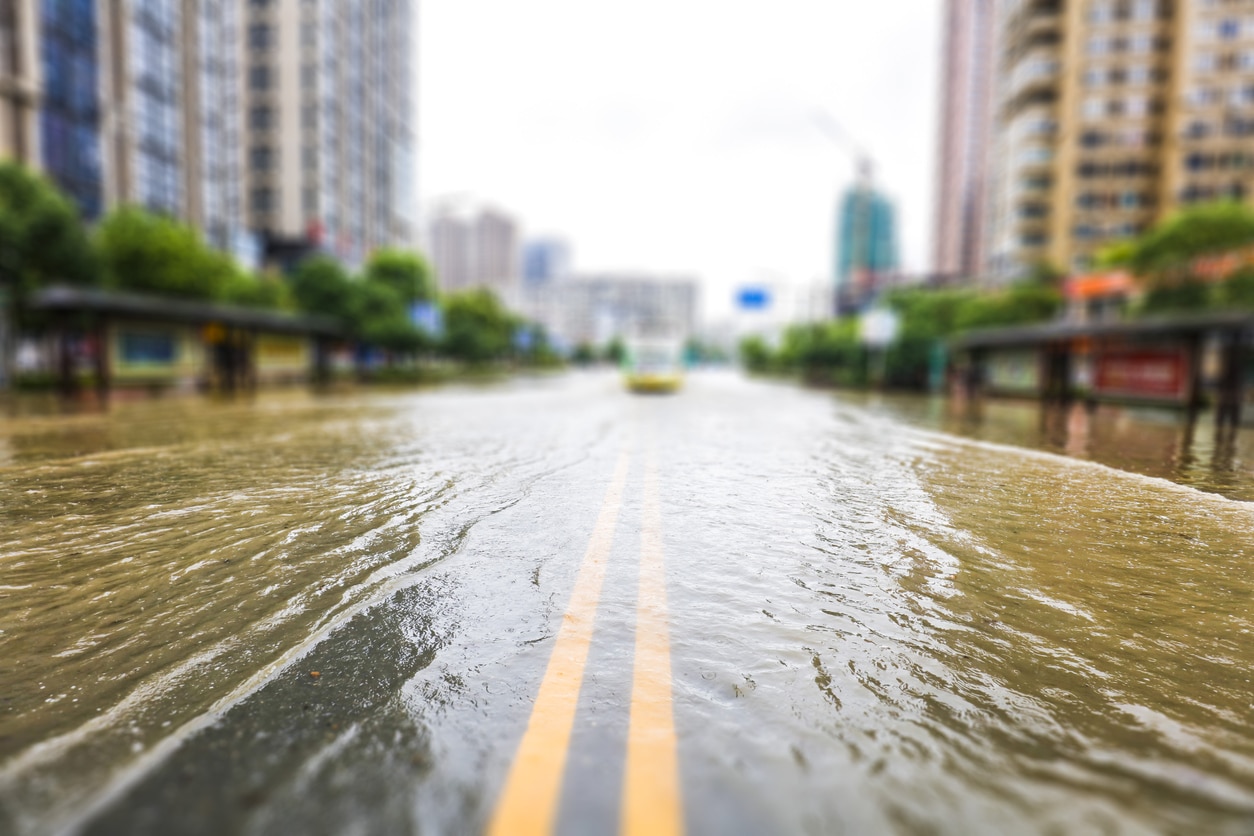As summer beckons and storm season heats up across the United States, it’s important to make sure you are financially prepared for damage caused by destructive events, including floods. While you may not realize it, floods are the most common natural disaster in the U.S., according to the Federal Emergency Management Agency (FEMA).
Between 1996 and 2019, flooding events impacted 99% of counties across America. And damage caused by even one inch of water in a home can be devastating, causing an average of $25,000 in losses, FEMA reports. Unfortunately, most homeowner’s insurance policies don’t cover flood damage, so separate plans are needed for anyone at risk of experiencing a flood.
There are steps you can take now to better prepare before flooding happens. John Dickson, president and CEO of Aon Edge, a private flood insurance provider, shares strategies on what home and property owners can do to protect themselves.
Understand your risk
First, review your local flood map and understand the factors that could put your home or business at risk. These risks may include an increase in local development, also known as urban sprawl, to changing weather patterns. You can view your local flood map here: https://www.fema.gov/flood-maps
Plan ahead when purchasing flood insurance
Because homeowner’s policies typically don’t cover flooding, flood insurance is usually purchased as a separate policy that can cover buildings and their contents. Private flood insurance is available as are policies offered by the National Flood Insurance Program managed by FEMA and offered to the public by a network of insurance companies.
The average cost of National Flood Insurance Program coverage is about $700, though rates vary based on factors including the age of your home, location and coverage amounts. Homes in high-risk flood areas with mortgages from government-backed lenders are required to have flood insurance.
To purchase flood insurance, you can call the same insurance company or agent you use for your home or auto policies. For help finding a provider, call the NFIP at 877-336-2627. Note that a new policy may not take effect immediately. There is typically a 30-day waiting period for a National Flood Insurance Program policy to take effect, unless the coverage is mandated and is a requirement of a federally backed lender or is related to a community flood map change.
Create an inventory of your belongings
Having an updated list (and photos) of your belongings makes filing potential claims for your damaged possessions easier on you and your insurance provider.
Place a copy of the list of contents of your home or business in a safe place, such as a safety deposit box or fireproof safe. You can also take photos of the lists and store them on your smartphone. If your home is threatened by a flood or other destructive event, be sure to pack your home and flood insurance information, including coverage rules, and contact information for your agent, in case you have to file a claim while away from home.
Have an emergency plan and practice it
Because your family may not be together if (or when) a disaster strikes, it’s crucial to know which types of disasters could impact where you live. FEMA officials encourage families to talk about how you will contact your loved ones and reconnect if separated. Establish a family meeting place that’s familiar and easy to find in case you can’t immediately get in touch by phone.
With reporting by Casandra Andrews






